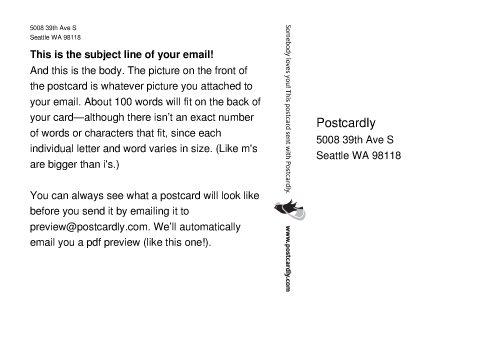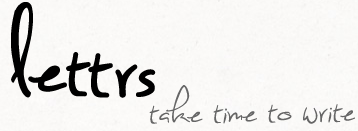The Romance of Postal Mail (Part 1): The Charm of Mail Call
In April, the Senate passed the 21st Century Postal Service Act of 2012, which places a moratorium on closing post offices, and delays the transition from six-day to five-day delivery until at least 2014. (The House hasn’t voted yet.) However, last week’s news of the United States Postal Service defaulting on a $5.5 billion retirement-fund payment is yet another sign of the financial decay of an American institution dating back to 1775.
There’s little doubt that the vast increase in electronic communication is at the heart of the USPS downturn. As an inveterate letter-writer and letter-lover, I believe real letters, thoughtfully-composed and artfully sent, delivered to our homes, even by not-so-speedy delivery, matter. Organized thoughts, committed to tangible form, raise spirits. Organizing the resources for sharing heartfelt messages worthy of savoring can only make the process easier to embrace.
We’ve previously reviewed various stamp-free options for sending tangible letters and telegrams via computer; over the next few posts, we’ll look at more ways of using technology (and ingenuity), to keep old-fashioned letter-writing alive in the 21st century.

Snail Mail My Email — Last summer, a month-long art installation embraced the slow pace of bygone days when people walked to the mailbox with anticipation, in hopes of a love letter or note from a far-off pen pal.
San Francisco artist and designer Ivan Cash created the project to “cultivate appreciation for the lost art of letter writing; that warm, fuzzy feeling you get when you open a letter and know that someone took the time to sit down and think of you.” During this project, 10,457 recipients in 70 nations on all seven continents received old-fashioned mail that started as bits and bytes. Users wrote emails which were transformed into handwritten letters, physically stamped and mailed by 234 volunteers.
Reminiscent of the slow-food movement, this project centered on using traditional mail for “being mindful and deliberate, and truly connecting with other people in more thoughtful and meaningful ways.” Although the project is over, you can read more about it in the upcoming book or on the Facebook page. For more on Snail Mail My Mail, visit the letter gallery and click on the letter map to see the range of distribution.
There are still a number of opportunities for you to organize a special and traditional mail call for the people in your life.
Postcardly helps you send a real postcard without ever leaving the comfort of your smart phone or computer. Why might that be helpful?
Perhaps you’d normally attach a photo to a tweet or email, but Great-Grandpa isn’t quite so comfortable around a mouse or track pad.
Maybe you’re nostalgic for the days of sending postcards from your vacation, but don’t have the time to change currencies or buy a stamp as you quickly travel from one mysterious destination to another.
And it might be that you’d love to share tangible snapshots of your honeymoon or new baby, but don’t have the energy to print cards or hand-address them.
Postcardly converts any email with an attached photo into a postcard and then sends your printed message and photo to your intended recipient(s) via the U.S. Postal Service.
1) Sign up for a free account — just provide your email address and create a password. (When you sign up, you get a free trial of three postcards; use FREETRIAL as the promotion code.)
2) Choose your Postcardly plan: Prepaid (a one-time $19.99 charge gets you 20 postcards to use within the first year), Monthly ($9.99/month, for 15 postcards every month and 99 cents for each additional postcard), or Monthly Lite ($4.99/month, for 5 postcards every month and 99 cents for each additional postcard). The free trial applies to all three plans. Each international postcard count as two (to cover the cost of extra postage).
On the down side, you have to provide your credit card information in order to complete your registration. However, Postcardly doesn’t charge your credit card until you’ve sent your fourth postcard, after completion of the free trial. Also, every Postcardly account works as a family plan, so you can add your spouse, kids, parents or siblings as authorized senders at no extra charge.
3) Set up your address book, with recipients’ names and mailing addresses.
4) Create a Postcardly email address (like PaperMommy@postcardly.com) and then send email from your computer or smart phone’s regular email program to the recipient’s @Postcardly.com address. Be sure to attach the photo!
Postcardly mails the postcard from Seattle (sorry, no Bali postmarks), with your words on one side and the photo on the reverse. You can also send the same postcard to multiple recipients, just by using the regular CC: field.
To see your postcard, email it to preview@postcardly.com and you’ll receive a reply with a PDF attachment to preview. (Try the feature even if you haven’t signed up for Postcardly, to see how it looks.)

lettrs is sort of a combination post office, time machine and museum. Founder Drew Bartkiewicz was inspired by the carefully preserved letters received by his maternal grandmother, and the site declares itself as “A platform to organize the world’s letters. Designed by lovers of the written word, lettrs is the place that facilitates, inspires, and slows the world’s lasting communications.”
Sign up via Twitter, Facebook or a personalized login.
To send a digital or typed paper letter, click on the Writing Desk and start typing a message, choosing from among three design styles (printing on lined paper, calligraphy on linen or old typewriter font). Accept today’s date as the default, or select a date from the past or future. If you wish, tag the message as if it were a blog post, to enhance searchability, and select whether it’s OK for the recipient to post it to his or her Virtual Fridge (sort of like a Pinterest board). Add photos to your letter with the clickof a button and a quick upload.
If you choose to send it digitally, it’s free. Send it to an email address, Facebook friend, Twitter follower or as an open letter visible to all who visit the site.
If you’d prefer to send a paper letter, enter the mailing address. If you don’t know it, you can just provide the person’s email address, and lettrs will email to obtain the address for you!
Select your fanciness preference. Would you like your letter sent on high quality, 25% cotton paper (for $2), watermarked, textured royal linen paper (for $4) or a hand-made, scented, linen card with a waxed seal (for $8)? (Add $1/letter for international mail.) Send as if from your own address, or from your first name and last initial at lettrs’ old-timey PO Box 99 return address in Collinsville, CT.
For either digital or paper options, you can request delivery for a future date (though I wouldn’t wait years and years, given the unpredictability of e-commerce).
You can also upload a letter you’ve already written or received, or one that’s been in your family for generations (or since you went to summer camp), add details about the date, author, recipient and back-story, and share socially with other members of lettrs on your Virtual Fridge. Keep other letters private in your Shoebox.
lettrs spreads love by helping you send real mail, and enables you to curate and preserve the love of letter-writing (and letter-reading). For more about lettrs and the letters Foundation, which promotes “slow communication and letter-recovery initiatives at charities across the globe,” including the Wounded Warrior Project and the Special Olympics, watch the video.

LetterWise is not a pretty site, but it sets out to do something that’s pretty loving. Let’s say someone — Great-Grandpa, again — isn’t exactly web savvy. The great-grandchildren, on the other hand, aren’t going to sit down to write letters to him even though they’ll gladly text and tweet and Facebook all day long. Poor Great-Grandpa.
LetterWise had a charming solution. You “sponsor” recipients, creating mailboxes identifying them (Great-Grandpa) and where the letters will be sent (Retirement Cottage, 123 Long Ago Lane, Old Timeyville). As the sponsor, you can then invite any number of people — your spouse, kids, siblings, co-workers, etc. to become members of that mailbox at no extra charge.
Then, all of you can easily and electronically contribute messages to the mailbox, either using LetterWise’s online system or by replying to an email reminder. Once or twice each week (depending on the plan you pick), LetterWise aggregates the messages into one single printed letter, up to eight pages long, stuffs it into an envelope, stamps it and mails to the recipient.
You pay to sponsor a new mailbox at $9.95/month for one letter per week, or $14.95/month for two, but it’s free for someone to “join” a mailbox. Great-Grandpa gets to stay in the loop and may decide to write back via traditional mail to the great-grandchildren.
All mail is confidential, so although Johnny may tell Great-Grandpa that he’s planning to backpack through Europe after college, Johnny’s mom, even if she’s a member of the mailbox, will be none-the-wiser. (Meanwhile, if Great-Grandpa is anything like Paper Mommy‘s father, he’ll tell Johnny how he came from Europe, and feh, who needs to go back there and schlep around with a satchel on his back?!)
Of course, LetterWise isn’t just for seniors. Kids at summer camp or boarding schools, and adults in the military, foreign aid workers and others may have undependable or restricted access to electronic communication. Using LetterWise can ensure that all their loved ones, particularly those who are more likely to dash off an email than search out stationery, can keep them close at heart.

Epistly, which just launched this spring, is the essence of simplicity. Write a quick blurb in the box on the front page of the site (or send a message to mail@epistly.com, with the recipient’s address in the email), and Epistly will hand-write it and mail it for you!
Epistly has four pricing plans:
Pay As You Go has no monthly charge, but costs a whopping $9.99 per letter, and promises your item will be mailed within three business days.
Scribbler is $9.99/month, earns you two letters (or credits) per month, with each letter $7.95 thereafter, and mail is sent within two business days.
Author is $99/month, earns twenty letters (or credits) per month, with each letter thereafter priced at $4.95. Letters are mailed within one business day.
There’s also a customizable Poet plan if you envision sending 100+ letters each month.
Once your letter is sent, Epistly emails an alert, including a snapshot image of your letter. Log into your account at any time to see the status of a letter order.
Pricey? Paper Doll thinks so, but the About section of the blog explains that the founders see Epistly as a way for busy entrepreneurs to send hand-written, customized letters. (They’ve already got at least one celebrity fan.) Of course, it won’t be your handwriting, but it’s real handwriting (rather than the horrible computerized, faux handwriting of direct mail campaigns) nonetheless.
Next time, we’ll look other online services for sending letters and postcards, numerous smart phone apps for making tangible postcards a (tropical) breeze, and a few other ways to make snail mail spiffy and appealing.




Follow Me